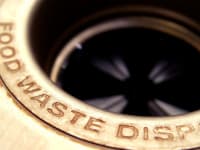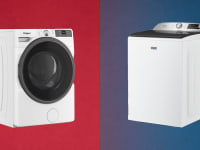10 things in your home that are full of mold and bacteria
Don’t worry, they’re easy to clean.
Products are chosen independently by our editors. Purchases made through our links may earn us a commission.
Even if your home looks neat and clean, it probably isn’t as pristine as you think. All over the house, there are things that are filthy—you just haven’t been cleaning them. Germs like Staphylococcus, salmonella, and E. coli, along with a variety of molds and yeasts, are all over the home.
Even machines designed to clean, like your dishwasher and your washing machine, can be full of germs, so they need to be cleaned periodically. Your refrigerator, your hairbrush, your pillow, your backpack—the list of filthy things goes on and on. Now that you know, you’ll want to do something about it. Don’t worry. We’ve got your back. Here’s how to clean the things you may never think about cleaning.
1. Your dishwasher
Most modern dishwashers have a filter that catches gunk and food residue. It’s usually at the bottom of the tub, under the spray arm. If you’ve suddenly noticed food specks on your dishes, that could be an indication of a dirty filter.
What to do
Remove the filter, clean it with a soft brush, and rinse it before you put it back in place. You may see a big difference with the next load.
How often?
Every other week
2. A front-load washer
If you have a front-load washer, you may have noticed a noxious odor emanating from it. Dirt, detergent, and liquid fabric softener can build up in the rubber gasket at the front, creating a home for mold and mildew. The odor can transfer to your clothes, making the problem even bigger. Luckily, this is a problem you can fix.
What to do
Run the empty washer with a cup of bleach in the dispenser. A hot Normal cycle will work well for this purpose. Then, maintain the clean by wiping out the gasket with a paper towel after every load and leaving the door ajar to expose it to the air. Make sure to always use the right type of detergent (HE) and avoid liquid fabric softener to keep your washer cleaner.
How often?
Once a month
3. The refrigerator
While a stinky washer is no fun, a filthy refrigerator can make you and your family sick. Bacteria like listeria, salmonella, and E. coli could be breeding in your fridge, especially if it isn’t cold enough. To keep food safe, make sure your refrigerator is the right temperature—37°F is ideal—and keep it clean.
What to do
Always wipe up spills immediately to avoid cross-contamination. Clean the shelves, door bins, and crisper drawers with a clean sponge dipped in a solution of two tablespoons baking soda in a quart of warm water. Wipe the refrigerator gasket, too. Swipe the handles with disinfectant wipes.
How often?
Every few weeks
4. Pillows
Your pillows are loaded with decomposing dust mites and their poop, which are allergens, and you sleep on them every night. Plus, those pillows are full of skin flakes, drool, mucus, sweat, and other bodily fluids. You need to get them clean or replace them.
What to do
Put the pillows in your washer. Loading them two at a time will keep the load balanced. Use a mild detergent and a gentle cycle to wash your pillows. Then, put them in the dryer on low heat. A couple of dryer balls can help keep them fluffy.
How often?
Every three to six months
5. The dish sponge

Disinfect your dish sponge often—it's growing bacteria in its nooks and crannies.
Because you clean up messes and wash dirty dishes with it, your kitchen sponge is one of the most filthy things in your house. It is teeming with bacteria, which multiply in its nooks and crannies, even if you don’t use it every day. And because you are using it to clean your plates, it is spreading those germs all over them.
What to do
Mix three-quarters of a cup of bleach into a gallon of water. Disinfect the sponge by soaking it in the mixture for five minutes, then rinse.
How often
Every day or two. But sponges don’t last forever, so to be safe, replace the dish sponge every two weeks.
6. Your toothbrush holder
Your mouth is teeming with germs and so is your toothbrush. You can discard your toothbrush after a few months of use, but have you ever cleaned the toothbrush holder? Next to your dish sponge, it’s the germiest thing in the house. It’s one of the easiest things to clean, though.
What to do
Wash it in the dishwasher. If you don’t have one, or, if your toothbrush holder doesn’t appear to be dishwasher-safe, you can hand wash it in a clean sink filled with hot water and dish detergent and rinse it thoroughly.
How often?
Every week
7. Your backpack
If you take off a backpack and drop it on the floor of your office, a bar, or the bus, that pack is covered with dirt and germs. When you get home and put it down, you’re spreading the germs around your space. To prevent this from happening, your backpack needs a cleaning.
What to do
Empty out your backpack, and vacuum out the inside, any pockets, and seams. If it’s made of fabric, put it into a pillowcase or a big mesh laundry bag and tuck it into your washer. Using your regular detergent, wash it on a cold delicate cycle, and hang it up to dry, outdoors if possible.
How often?
Every couple of months
8. Your mascara
When you put on your mascara, bacteria like Streptococcus pneumoniae, which live on your eyelids, can be transferred to the brush and into the tube. Those bacteria can multiply and cause pink eye and other eye infections. Sounds scary, right?
What to do
Remove your mascara thoroughly every night to make sure the germs don’t linger on your eyes longer than necessary. Never introduce other liquids into the tube. And don’t expect mascara to last forever. You’ll need to replace it regularly, which could be an argument for buying drugstore mascara.
How often?
Every month.
9. Your hairbrush
Your beloved brush is covered with product, bacteria, and yeasts. You’re applying all of them to your clean hair every time you brush. Before the next time you blow-dry, get your brush cleaned up.
What to do
Remove the hair from the brushes with a comb and scissors. Then, soak the brushes in warm water with a few drops of shampoo and some baking soda. Rinse in clear water and dry on a towel. If you have a plastic brush, you can try washing it in the dishwasher.
How often?
Once a month
10. Every light switch and doorknob in the house
Doorknobs and switches are among the dirtiest parts of your home. Everyone who comes in handles them, and you don’t know what they touched previously. Have you ever cleaned a knob or switch? If not, start today.
What to do
Use disinfectant wipes to clean the knobs and switches.
How often?
Constantly, especially if someone in the home is sick.
Should you panic?
The world is full of germs and so are our homes. There’s no need to panic. But you should definitely get into the habit of washing your hands with soap and warm water before you touch anything in the home. And if that sounds impossible, just make it a point to clean the dirtiest things in your house regularly.


